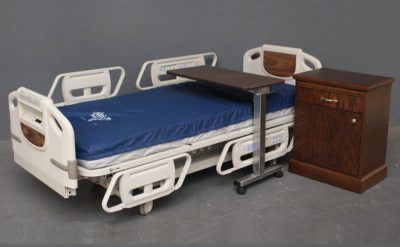Hospital beds should be comfortable, safe, and stable to provide an ideal resting place for patients that need time to recover. Unlike conventional home beds, hospital beds have great positional versatility and security. These beds come in varying designs, sizes, and styles. As such, choosing an ideal hospital bed can sometimes be a daunting task if you don’t know what to consider.
This post will present to you some of the most important considerations that you should make when choosing a hospital bed for your patient’s home care. They’re top user-based considerations and bed features that you should look at before choosing a hospital bed.
The Size of the Patient
Tall patients need extended bed surfaces, while short patients need shortened bed surfaces. If your patient weighs more than average, then you may need a sturdy bariatric bed because such beds can bear more weight. If your patient is a child, then you’ll need a small-sized bed with a miniaturized hospital bed frame.
The Mobility of the Patient
Can your patient get in and out of bed with ease? The ability of your patient to get in and out of bed helps in informing you about the level of support that may be necessary for using the bed. For example, if your patient is unable to adjust themselves well while in bed, then you’ll need a hospital bed with a hospital bed frame that is adjustable.
The Strength and Mobility of the Caregiver?
If the primary caregiver doesn’t have enough strength to operate a manual crank on a hospital bed to adjust its position, then you should strongly consider buying an electric bed. Electric beds are comfortable to work with because the hospital bed frame gets adjusted through electrical means that don’t need too much energy.
What are some bed features you should consider?
1. Positioning Options
A custom hospital bed frame design is flexible and adjustable. Standard beds used in hospitals allow you to adjust basic patient positioning options. But some modern hospital beds provide a more extensive range of position change options. You should thus choose a hospital bed with the most position options.
2. Gap Protection
Most hospital beds that have sides or rails are designed to have some gap protection. This feature prevents the possibility of a patient getting stuck between the rails and the bed. The gap protection is an essential feature for patients with many nocturnal movements or seizures.
3. Side Rails
The side rails in a hospital bed frame protect the patient by preventing them from falling out of their beds. These rails also provide support to patients when they’re moving in and out of bed.
4. Storage and Bed Scales
Some hospital beds have storage compartments and weighing scales. The patient can store medication in these compartments. The in-built scale can get used in determining the patient’s weight during medical checks.
5. Affordability
Buying a new bed is often the best option, but it may be costly. If you find that you don’t have enough funds, then you should choose to buy a used hospital bed. Such beds are affordable, and they’re also tried and tested. The nation has an estimated 2.5 million nursing home and hospital beds that are under use.
So, try and secure refurbished hospital beds from hospitals that are upgrading or closing down. You may also get other refurbished items, which may include a hospital stretcher, a stretcher bed mattress, a stryker hospital bed, or a hill ROM patient bed, and other bed accessories from hospital sales.
Buying a hospital bed for patients that need home care can make their lives comfortable and simplify the work of the primary caregiver. It’s advisable to get a comfortable bed with many positioning options, and safety features. To make the right choice, you’ll have to consider the patient’s needs, the bed’s safety features, bed positioning options, available bed accessories, and affordability.
With all these considerations, you should be able to secure a safe, comfortable, and sturdy bed for your patient.


Recent Comments